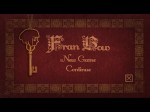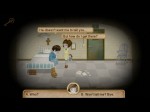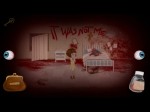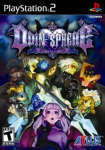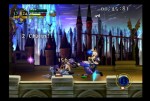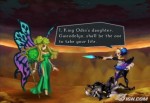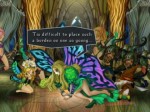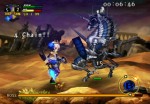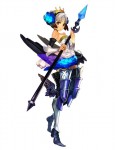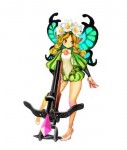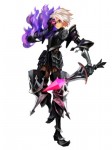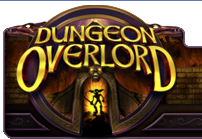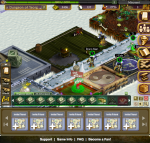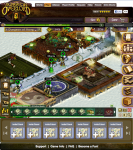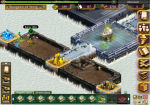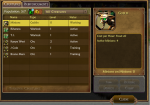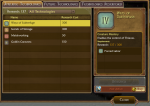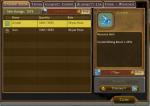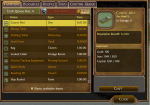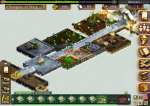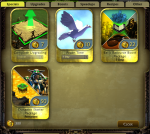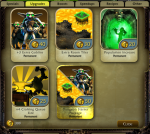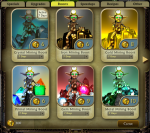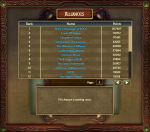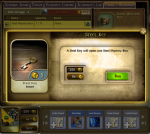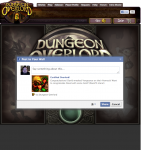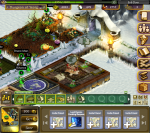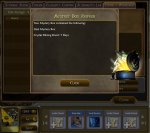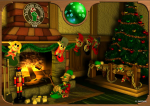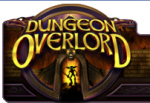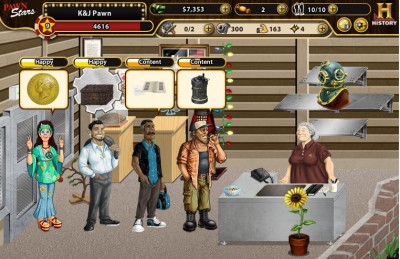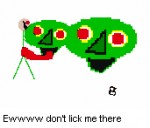Developer: Rockstar North | Publisher: Rockstar Games || Overall: 9.5/10
For me, a Grand Theft Auto game is like one of those mini-milestones in my life; I get to experience something fantastic, funny, and overall extremely entertaining. I’ve bought each of the mainline GTA games during the first week of release, and have thoroughly enjoyed each of them. I still have yet to complete any of the games on PlayStation 2, and I still need to buy Vice City Stories, but I can pretty much say that GTA is a big part of what makes gaming so enjoyable to me.
So, does Grand Theft Auto V continue to be the torchbearer that has been such a motivator for me to stick with gaming as a whole? The answer is yes, but the answer is also no, in some regards. Grand Theft Auto is a lot of things to a lot of people — a social scapegoat, a cool game to fuck around endlessly in, and most of all an offensive and satirical look at America and what it means to be an American.
Grand Theft Auto V breaks the mold of its predecessors by allowing you to play as three different characters. Each character has their own individual stories and some missions that overlap with each other. The missions culminate at certain points of the story where you will do “Heists.” Heists can essentially be looked at as the major challenge or “boss” of that point of the game. Heists themselves are very dynamic story missions that allow you to switch characters based on what sort of preference you have. At times you’ll also be forced to change characters to progress the mission. There are several occasions where a character has to drive 5 miles to a certain location, but during “their drive” you can switch to another character who is currently in the middle of another objective that is occurring. After completing the Heist, all three characters have their own missions opened up again.
Each of the three characters draw parallels to previous characters in the series, with the character Trevor, who is a drug dealing crime entrepreneur being the most unique as far as the series-as-a-whole goes. All three characters, and their motion capture/voice work actors, do an amazing job in conveying the story and making it enjoyable. First and foremost, the story of Grand Theft Auto V is a character story. There is very little strength in an overall arcing story, as it never really comes to a head, but the real joy of the story is the interactions between the characters and the way they live their lives and the things that go on around them. The main storyline revolves around the government and government corruption, but is never fully realized in its potential. My feeling is that there will be expansions, a la GTA IV’s expansions, where each character may be the sole focus to fully flesh out the remaining questions that each individual’s story sort of left open ended even as the credits rolled and after.
As a result, the story sort of just drops off at the end and you’re left with questions for each of the individual character’s stories without any real indication that they will be answered or even if the inevitable expansions are even going to focus on the main protagonists of the GTA V. A lot of the plot points of in the characters’ personal stories make you question why they bothered having them when there was no real pay off. A wait-and-see approach for the expansion plans is sort of unnerving, but if it pans out the way I hope it does then it may not be that bad.
The game play has been universally improved from GTA IV. Combat is a lot more fun and refined. The addition of the weapon wheel allows for switching guns in a more efficient manner. Many of the same features you expect in a GTA game are present, and have been refined as well. Being able to customize cars permanently is a welcome addition for the single player mode. Speaking on cars, your characters all have their own “personal vehicles” that you will undoubtedly drive more often than not. This is a vast change from previous games where you would always just steal a car to get around the city. Now that you have your “own” personal vehicle you can always rely on using that car. I actually preferred to use the personal cars to give the feeling of consistency for the story. The cars are also unique, so you can tell when another character is driving it or is parked somewhere waiting for you to start a mission.
During a lot of the missions there are opportunities to catch references to action movies in a way that is an homage to Hollywood and Los Angeles. There are plenty of hilarious scenes and subtleties that make this Grand Theft Auto leagues ahead of any before it, while still harkening back to them. Most notably is GTA: San Andreas, as you encounter gangs that existed in that game as well as visiting CJ’s home neighborhood — you will instantly recognize it and there is even a mission where you will have a shootout through the whole neighborhood. You will also be able to walk into a lot of different buildings during your missions — one such being the LifeInvader offices where there are a lot of Facebook-related jokes and scenes to be had.
Missions are split out into separate categories — “Missions” and “Strangers and Freaks.” During the series there has always been those “off-storyline” missions that came around that didn’t have much to do with anything. In Grand Theft Auto IV, they added “strangers” that you could meet on the street and talk to them for a little while or even do a mission for them. The Strangers and Freaks missions in Grand Theft Auto V allowed Rockstar to combine both of those aspects and let themselves go really crazy with designing missions. Shooting aliens after smoking weed, kidnapping a movie star for two old British tourists, and skydiving out of a helicopter into the city are only some of the things that you can do in tandem with the main storyline. Another welcomed feature is the ability to replay all of the missions you find and refine your score on them so you can earn trophies.
With Grand Theft Auto V, you can tell that even though the game is goofy at times, they have made it a point to make the game act much more “realistic.” The way people walk and run, physics that are toned down, and the serious storyline are all honed in on this goal of becoming a “realistic” game. A major casualty of this appears to be the loss of many of the more “traditional game” elements that we have seen in the Grand Theft Auto series, namely Vigilante, Ambulance, and Firetruck side missions. Vigilante has been seemingly replaced with “random events” that you will stumble upon as you are driving through the city. During these random events, people will get their property stolen or police will be in a shootout with the criminals and you can either step in or let them go. While they are nice as an addition, I think I would have gotten at least a couple of more hours of enjoyment from being able to hunt down a list of bounties or have the game generate a group of criminals for me to take down, like in GTA IV. It is unfortunate because GTA V’s combat system is A LOT OF FUN, and I wish I could just have more combat outside of missions. Being able to access the internet on your phone is also very convenient, but it seems like there are a lot less web sites to find this time around. Watching TV is also not as convenient because there is no “full screen” mode and the volume never seems to be able to be turned up loud enough where I can comfortably hear what is going on.
The graphics in the game are very impressive. Really awe-inspiring, however, is how big the game’s map is and how accurate it is to Los Angeles and the surrounding area in California recreated as Los Santos, Sandy Shores, and Blaine County. Being from the LA area, I felt right “at home,” and the lighting in the game makes it that much more authentic. The wilderness and desert areas are much more fleshed out compared to how they looked like in GTA: San Andreas. You can even hunt in the wilderness. While GTA V is a “revisiting” of San Andreas, the lack of San Fierro and Las Venturas can sort of irk you if you are a stickler for the “lore” of Grand Theft Auto. As a result of having the game be more focused on Los Santos itself, we got a much more detailed and expansive city. The radio stations are also pretty good and varied. There are some great tracks, but since nothing can ever live up to GTA: Vice City, we’ll just have to say it’s about as good as it can be.
A part of the experience to note is that ever since the Hot Coffee controversy became a big deal with GTA: San Andreas, Rockstar started becoming more and more daring with what actual sex content they choose to depict. While GTA IV poked fun at themselves by saying “hey wanna have some HOT COFFEE” and then had a lot of groaning noises saying how good the coffee is, in GTA V they literally have people having sex in plain view as part of missions — not something that is really optional like dating. And I don’t think anyone even gave a fuck (pun!) about it this time around! I was laughing my ass off when I saw one of the “movie stars” getting pounded doggie style as you take pictures of her, which resulted in her chasing after you in her convertible trying to kill you. GTA V can just be a lot of fun. You can also call random characters up to “hang out” with them and play mini-games, but as opposed to GTA IV, you aren’t forced to maintain any relationships and as a result there doesn’t seem to be any benefits from them now.
Playing the game for about 50 hours, I can say that GTA V is the best game of the series. Growing and changing as a gamer since playing GTA III, I find myself less and less inclined to just “fuck around” for an endless amount of time. I just got through the missions, played a couple of the repeatable side missions, and called it. Ostensibly, it was worth my $60 regardless, but the point of mentioning it is that sandbox games have become a more focused experience and can be less about “go do anything you want” and more about “here’s the things we want you to do, go do it the way you want to do it.” This is the way gaming has evolved and I do enjoy a more focused experience for sandbox games since they can get very distracting at times. Not to say that you CAN’T just go do anything you want to do for hours on end, but it pushes you towards what it wants you to do much more than other GTA games.
GTA V also comes with GTA: Online, which is basically just a fleshed out version of the multiplayer from GTA IV. GTA: Online is structured more like a free-to-play MMO game with progression of your character, and also gets back to the more “gamey” aspects of the Grand Theft Auto series than the single player experience offers. There’s definitely more people playing it than GTA IV’s online mode, but since GTA: Online is almost its own game entirely, I will just review it later if I get around to it. It is constantly changing as well since they will be adding patches and re-balancing as time goes on.
GTA V is good, and I hope to see more for the game soon.










